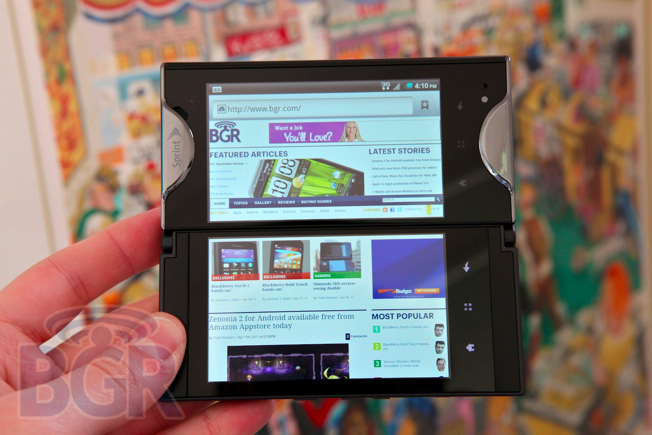Sprint Kyocera Echo Review
Sprint's Kyocera Echo is a brand new concept in the mobile space. It's innovative, and it's bold. Using two displays that connect together to form one large touch surface, you're able to interact with your handset in a way that's never been possible before. You can use Twitter on the top screen while scrolling through your photos on the lower display until you pick just the right one you want to upload to TwitPic — or you can use the email app with both screens, one letting you view your inbox and the other showing you an individual message. Does having two displays make sense in the real world? More importantly, is the Kyocera Echo the right device to deliver this unique new experience? You'll find out after the jump!
Hardware / Display
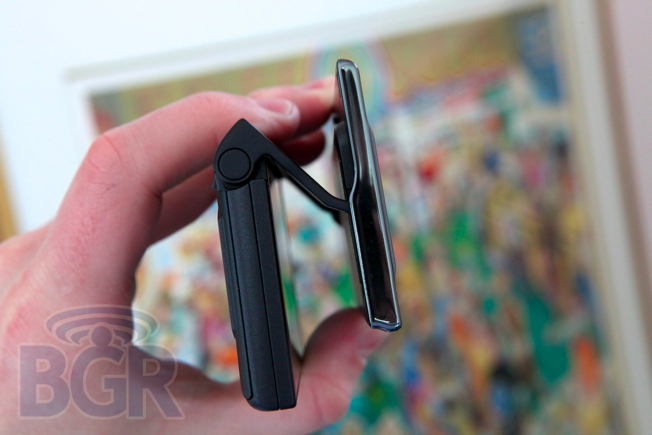
The Echo features a 1GHz Snapdragon CPU, dual 3.5-inch touchscreen displays with extremely small bezels (which is important when they are placed side by side) and a 5-megapixel camera with 720p HD video capture. It also runs Android 2.2, and sports the usual Wi-Fi, Bluetooth, and mobile hotspot must-haves.
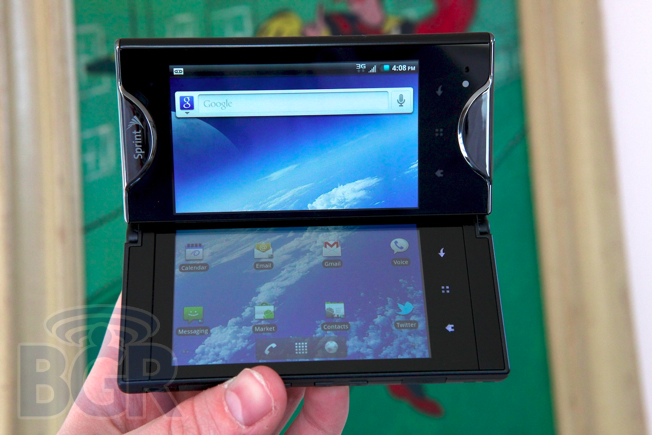
Kyocera is a company that has been spitting out solid products for a long while, and the company's experience shows. As far as the hardware is concerned, this thing is a tank. Now, that's a good and a bad thing as you'll soon see. I love the construction of the Kyocera Echo because it feels indestructible. There's a beautiful mix of high-quality materials like aluminum and soft-touch plastic, though the design identity of the Echo doesn't really seem to mesh with my personal tastes. The phone's styling is very bland to the point of being boring, and the metal-look plastic accents above and below the front display make matters a bit worse.
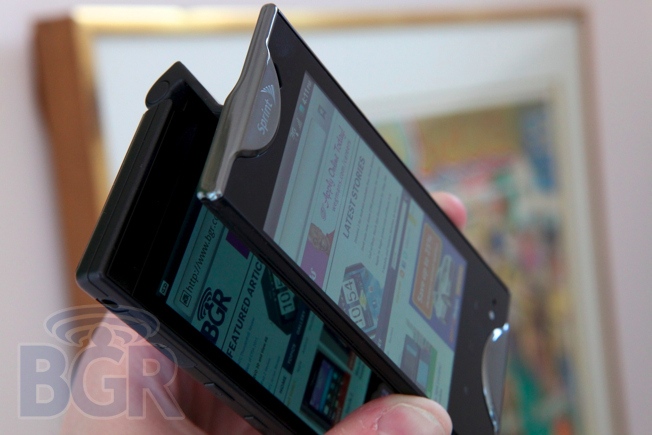
The device, which rocks two displays that are effectively sandwiched on top of each other when closed, is incredibly thick. It's not overly wide or long, but it's thick. It's not unreasonably thick thanks to how narrow the Echo is proportioned, but it's close. It was pretty tough to carry the Echo in the pockets of my jeans, for example. The first time I opened and closed the Echo I thought I was going to break it. Not because it was fragile, but because the hinge mechanism clicks into place very firmly. In addition to having both screens positioned right next to each other, you can also tilt the top display towards you to face you much like how a Nintendo DS is situated.
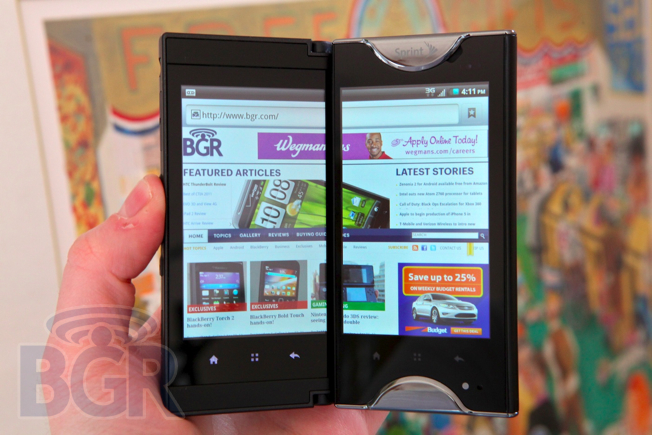
Speaking of the displays, the dual screens look great. They are crisp, bright, and clear. Colors look great, and touch sensitivity is spot on.
Software
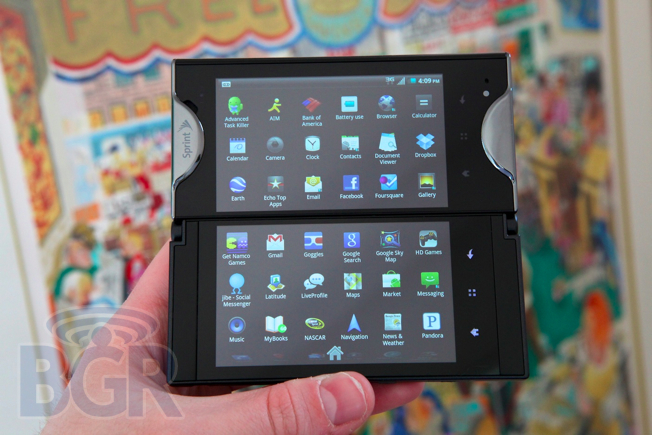
The Kyocera Echo's dual-screen set up works out of the box with every Android app and game, though it's the company's custom software on top of Froyo that really takes advantage of the configuration. There are seven default apps that are optimized to work in "Simul-task" mode, and this allows you to run one app on one display with a completely different one running on the other. There are also app-specific tweaks, like in the camera app or email app that really demonstrate the difference two displays can make.
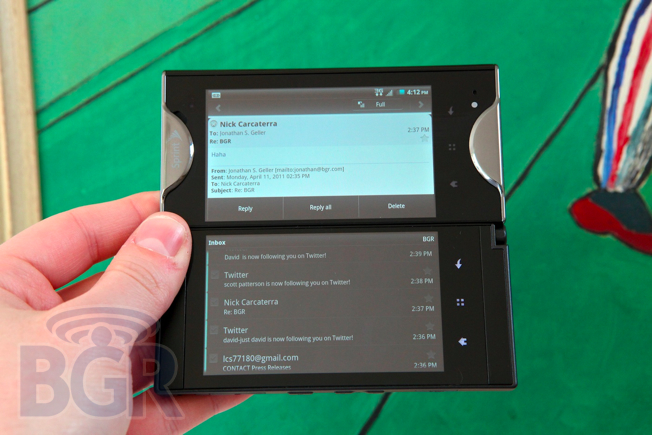
To run two apps simultaneously, you just simply tap with two fingers on the displays, and up will pop a menu letting you choose which app you'd like to run. You can also flip the apps from one screen to another with one tap. Another advantage of having two displays? When you tap into a text field, the entire bottom screen turns into a QWERTY keyboard — it's one of the largest, if not largest, touch QWERTY keyboards I've ever used, and it works reasonably well.
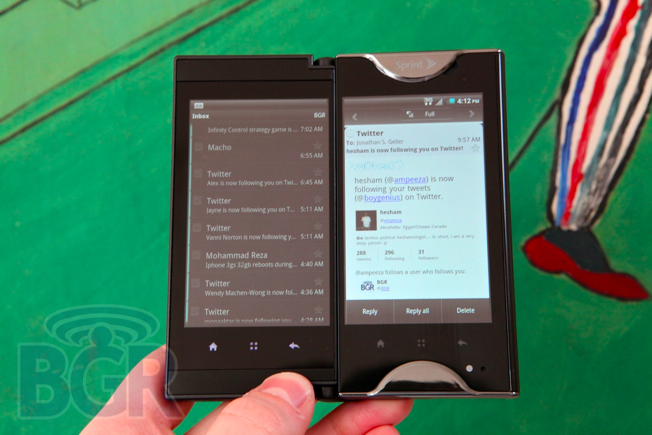
There are also apps from third parties that have been optimized for the Echo, and one of them in particular is The Sims 3 by EA. The game is literally something right out of a Nintendo DS, making use of the top display for visuals and the bottom display for control and actions. It really highlights the possibilities of what can be done with this kind of set up. Kyocera has an API for its dual-display Echo and it will allow third-party developers to get cranking on getting things optimized for two screens. For the time being, however, there aren't very many third-party apps that make use of Kyocera's API so the end result is frustration. The mind has no choice but to wander to all the cool apps that could make use of this technology, but unless dual-display Kyocera devices really make waves with consumers, I can't see many developers getting behind the product.
Something to note, however, is the fact that in dual-screen mode, performance doesn't really seem to take a hit. Whether it's pulling up the web browser and loading a content-heavy page with Flash content, or flicking through photos in the gallery app, having two screens doesn't slow the system down all that much.
Phone / Speaker
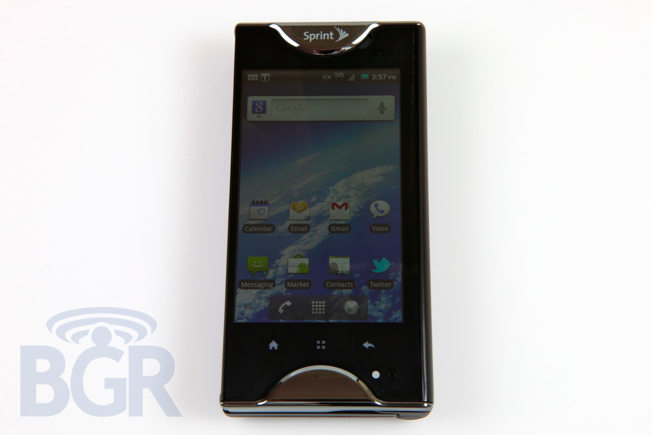
The phone portion of the Kyocera Echo is sort of a mixed bag. On one hand, the phone app hasn't changed too much from the stock Android version, however on the hardware side, things aren't that great. The ear speaker is extremely quiet even on the highest volume setting, and hearing the caller on the other end can be difficult in some scenarios. As far as the external speaker in concerned, it performs much better than the ear speaker — it's reasonably loud and clear. Reception on the Kyocera Echo has been great and I get five bars in locations where I have traditionally only received around three bars with other Sprint devices.
Battery
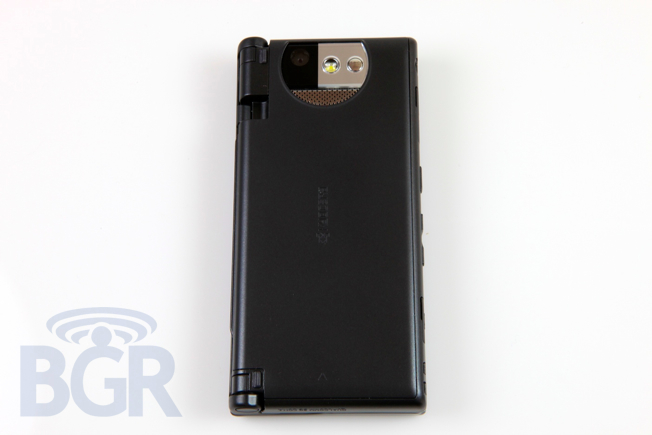
You'd think a phone that features not one, but two displays used simultaneously would drain a battery faster than Hugh Hefner's new wife, and you'd pretty much be right. Battery life is relative as each person expects something a bit different, but after spending days with the Echo, I can confidently say that battery life isn't that good. It's not terrible, but again, that's relative. It lasts a little bit longer than the original HTC EVO did for me, and that's a 4G handset. Kyocera and Sprint have not only included an extra battery in the box, but also an external battery charger that can be used to power your device without having to plug it in to the wall. Just charge the external charger with the extra battery and you can then plug your phone directly into that to charge it — it's definitely a nice option for powering your device without interrupting that conference call, while on the go, or to avoid having to cut your Angry Birds session short.
Conclusion

I've really liked using the Kyocera Echo on and off for around a week. The concept really is innovative and it definitely pushes the boundaries of what's possible on your mobile phone. Just as many people like to have two displays on their computer set ups, having two screens on a mobile device really can change your workflow and allow you to interact with apps and information in a brand new way. With that said, while the Kyocera Echo is the first device in what Kyocera says will be a lineup of devices featuring dual-display configurations, and I'm not sure this first try quite hits the mark. It's thick and heavy, and without a more extensive suite of custom apps and developer support, I just can't see enough of an advantage over going with a device like the Google Nexus S 4G or the upcoming HTC EVO 3D. The concept seems bigger than the execution, for now, but I really hope the Echo gains enough traction to warrant more refined models and significant support from the developer community. If Kyocera can pull that off, the results really could be awesome.
